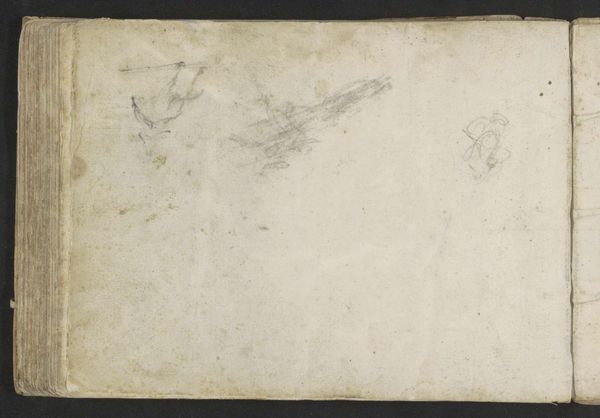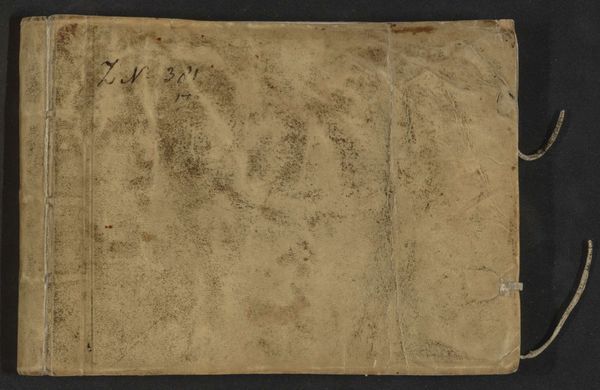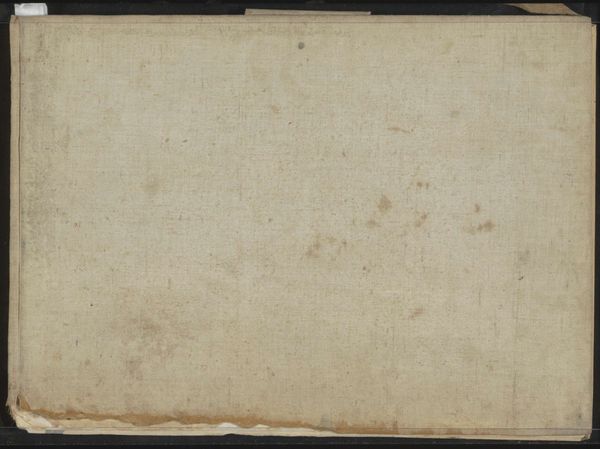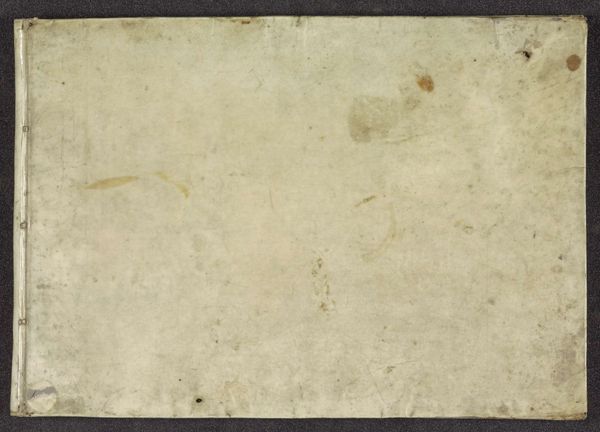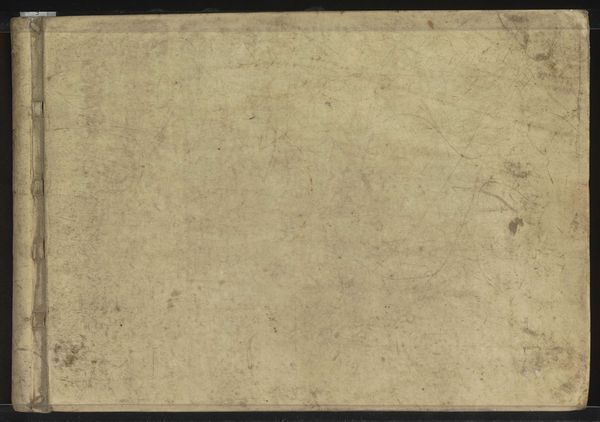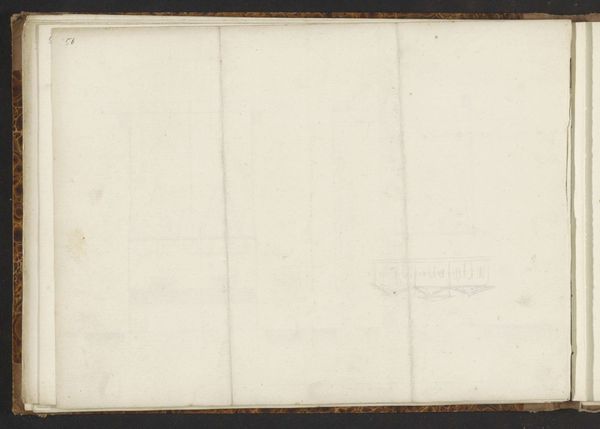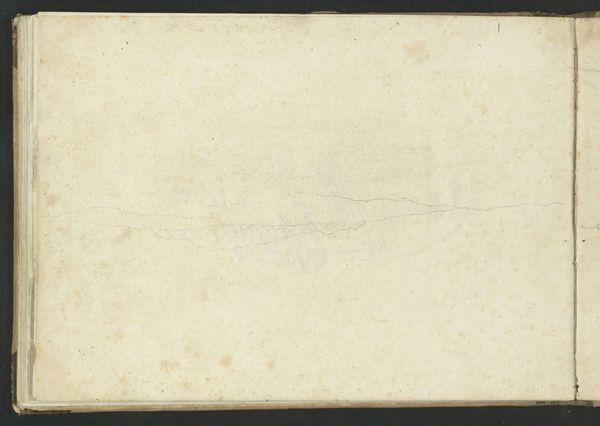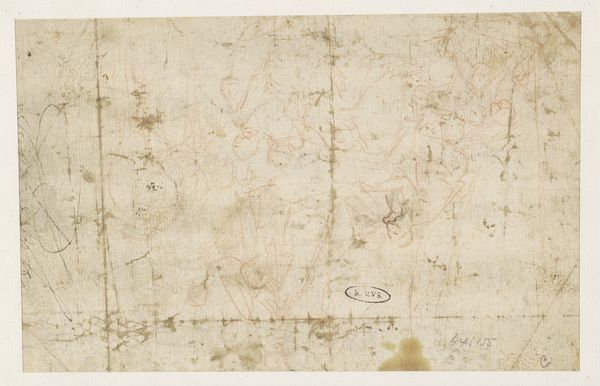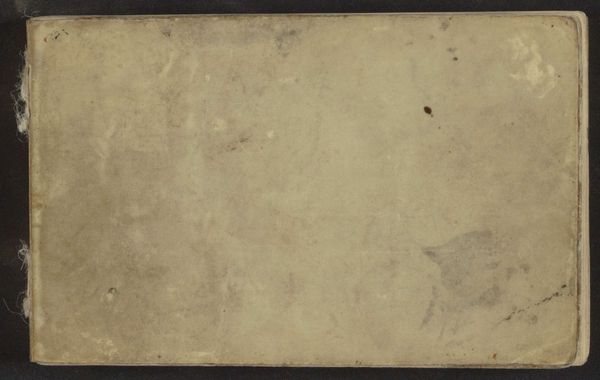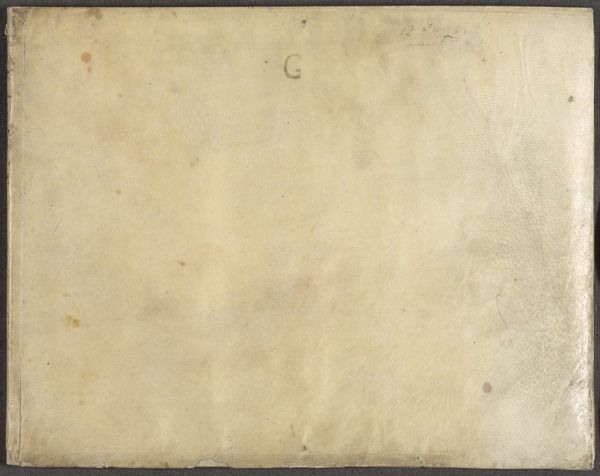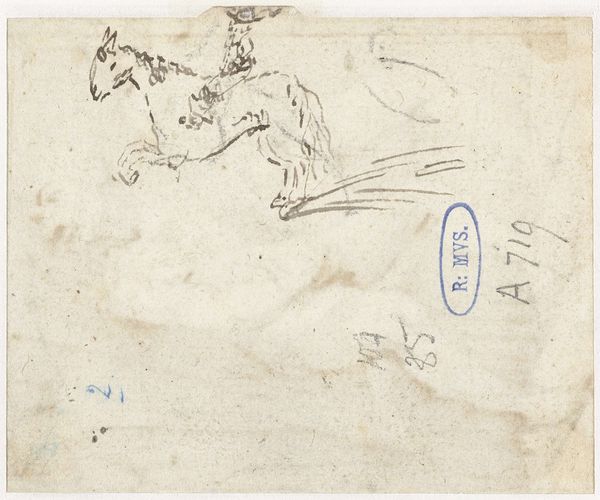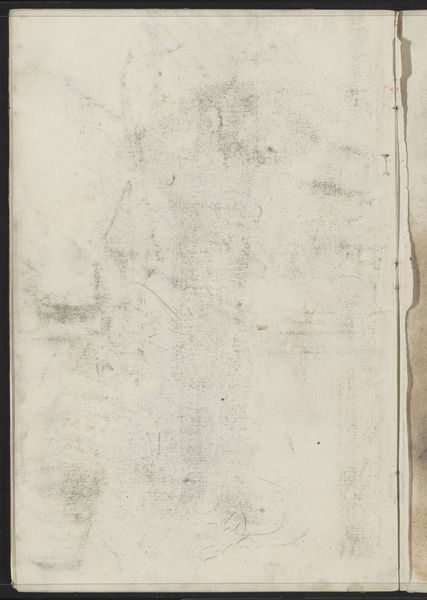
drawing, pencil
#
drawing
#
dutch-golden-age
#
figuration
#
coloured pencil
#
pencil
#
genre-painting
Copyright: Rijks Museum: Open Domain
Editor: This is "Galopperende ruiter," or "Galloping Rider," a pencil drawing by Gerard ter Borch, made sometime between 1631 and 1635. It's so small and faint, almost a ghostly image. What aspects of the artwork stand out to you? Curator: I'm drawn to the materiality of this drawing. Notice the thinness of the pencil lines, and how the artist has allowed the texture of the paper itself to become part of the work. We can also see the bookbinding! The image suggests a direct relationship to its means of production. The labor here, though quick and perhaps preliminary, still tells a story of material and intention. Editor: So you are suggesting the artist cared about how the drawing was constructed as much as the subject matter? Curator: Exactly! Consider also the social context: genre scenes were increasingly popular with the Dutch middle class. Do you think a quick drawing like this might have been preparatory for a more "finished" work meant for consumption in that market? Think about the accessibility of materials like paper and pencil versus oil paints. What does that imply? Editor: That's an interesting thought, it does make the piece more relatable than other artwork from that period! Because pencil and paper are not as expensive to purchase as say a painting. It does seem to blur the lines of high art with a more functional one! I never thought about that. Curator: Yes! The means of production influence the kind of art that’s made. This isn't just about aesthetics; it's about labour and the circulation of images within a specific society. Editor: I definitely see that differently now, that understanding the work isn’t just looking at the obvious interpretation, but at how society's need influence the type of artwork that gets made and distributed.
Comments
No comments
Be the first to comment and join the conversation on the ultimate creative platform.
